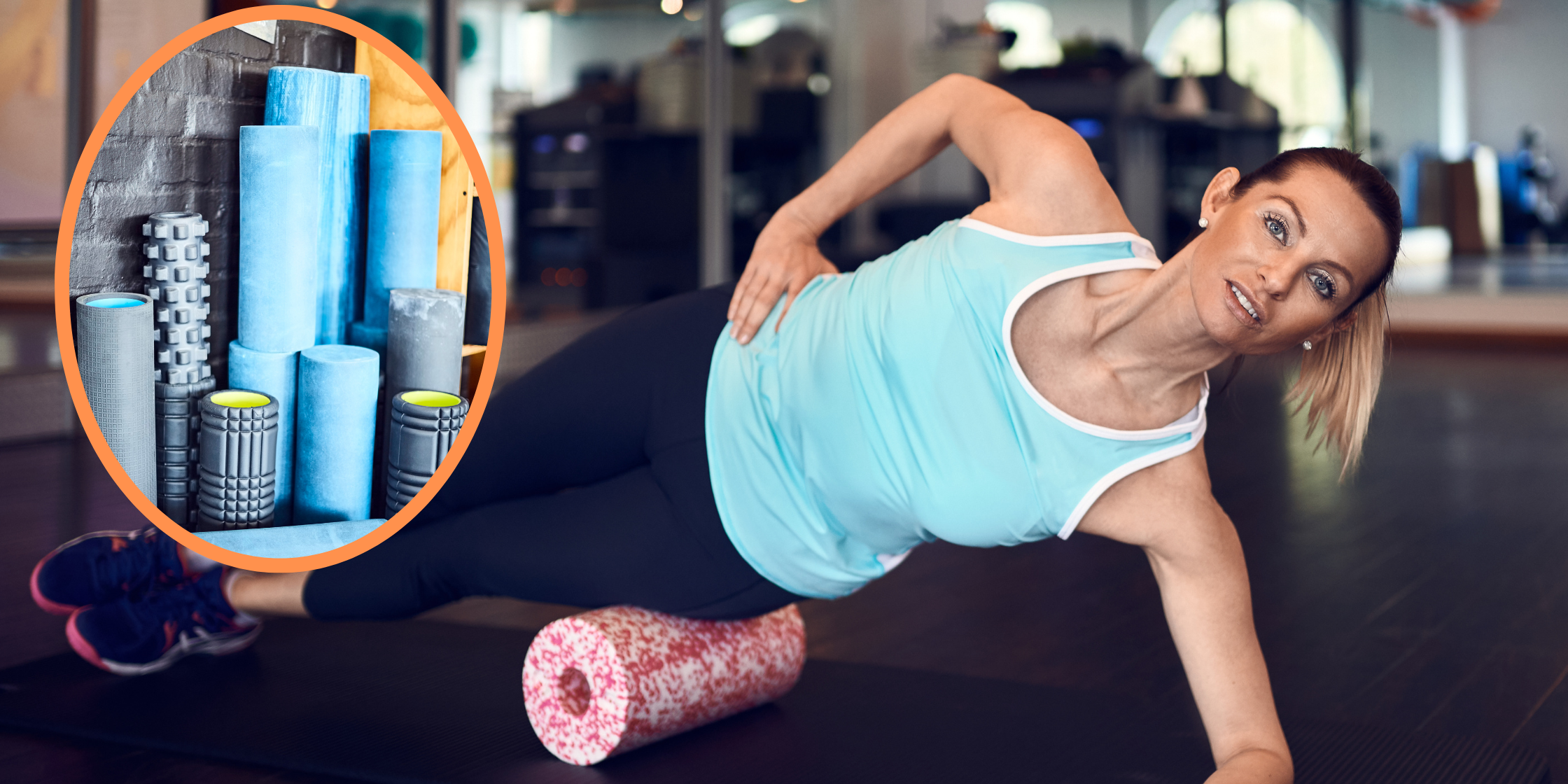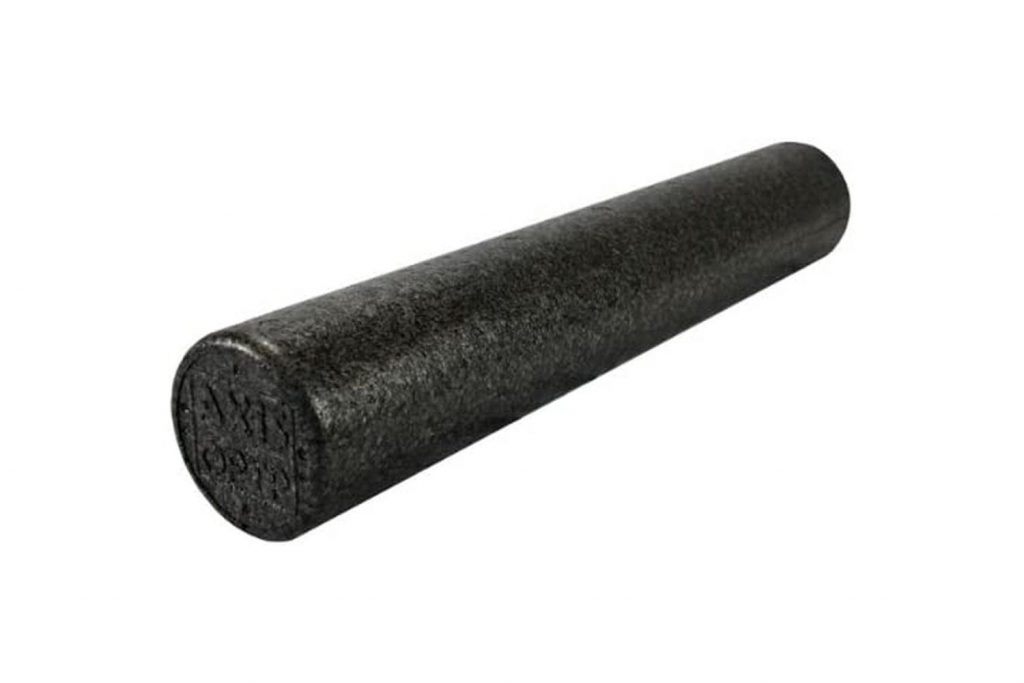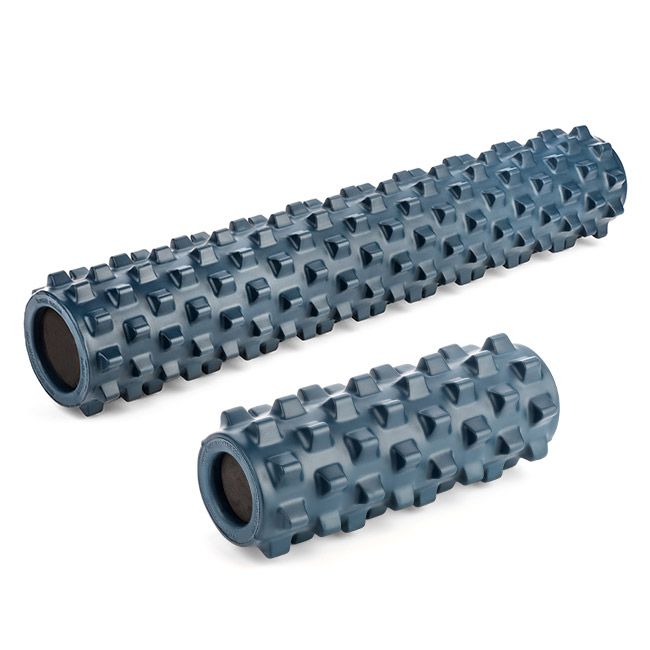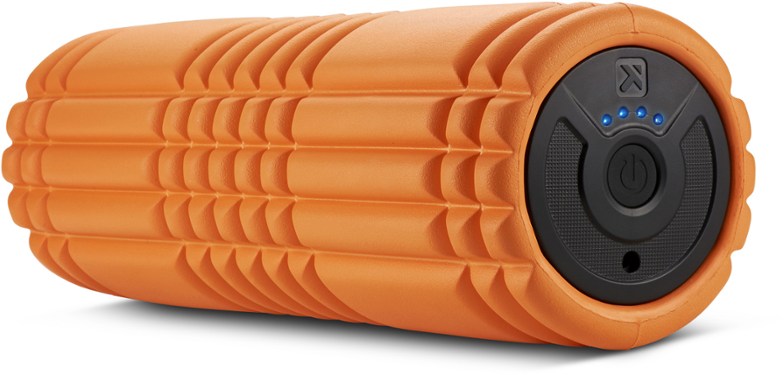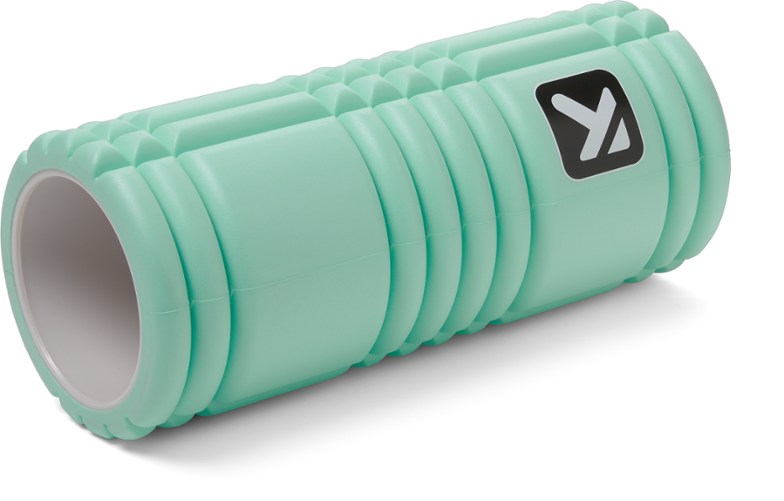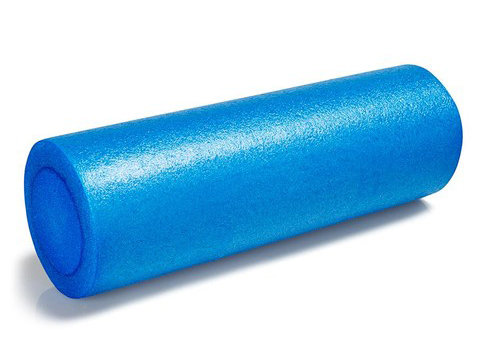You’ve probably seen foam rollers in the gym and wondered what they’re for.
Well, runners especially can benefit from using foam rollers to help with recovery.
Here are the different types of foam rollers, their pros and cons, and which one is best for you:
- Traditional foam roller
- Textured foam roller
- Vibrating foam roller
- Grid foam roller
- Low-density foam roller
- Round Foam rollers
We will dive deep into the different types of foam rollers you can use, and identify which one might be best for you.
Traditional Foam Roller
A traditional foam roller is a cylindrical-shaped tool made from high-density, closed-cell foam.
This type of foam is firm enough to provide deep massage, but not so hard that it causes pain or discomfort.
A traditional foam roller typically has a density range of 8 to 10.
This range is comfortably firm enough to provide a massage, but still gives slightly with pressure. It’s the perfect level for general use and is suitable for beginners and experts alike.
It is great for full-body rolling out, as it can provide a deeper massage and increase blood flow by targeting specific muscle groups.
The Pros
- Increased circulation and flexibility
- Improved range of motion and performance
- Decreased risk of injury due to more efficient movements
The Cons
- Discomfort due to the firmness of the foam, which may not be comfortable for everyone.
- May not be able to provide as much pressure as other types of foam rollers.
Textured Foam Rollers
A textured foam roller is a cylindrical-shaped tool with an irregular surface.
Textured foam rollers generally have a medium-to-hard density, which is slightly firmer than that of traditional foam rollers.
A textured foam roller has a density range of 10 to 12, offering a more intense massage experience.
The extra firmness provides deeper penetration into the muscle tissue, making them perfect for athletes or people with tight muscles who are looking to break up knots and reduce tension.
This allows for deeper massage and increased blood circulation, while still providing enough cushion to prevent pain or discomfort.
It offers a more intense massage than a traditional foam roller and can target specific muscle knots or points of discomfort.
The Pros
- Intense massage that targets specific muscle knots or points of discomfort
- Increased circulation and flexibility
- Improved range of motion and performance
- Decreased risk of injury due to more efficient movements
The Cons
- The surface may be too intense for some people’s comfort level
- May not be as effective as other types of foam rollers in increasing overall circulation
Vibrating Foam Roller
A vibrating foam roller is a foam roller with an integrated motor that causes it to vibrate.
Vibrating foam rollers have a higher density than traditional and textured foam rollers, typically ranging from 12 to 18.
The increased firmness allows for targeted pressure on specific areas of the body, while the added vibration makes the massage experience more intense and therapeutic.
This range is slightly higher than the traditional foam roller density, which is usually between 8 and 10.
Higher-density foam rollers are generally more durable and provide a more intense massage.
Vibrating foam rollers also have vibration features, which can help to further enhance the massage experience.
The vibration from a vibrating foam roller helps massage the muscles and connective tissues in the body, increasing circulation by promoting better blood flow.
The increased circulation allows oxygen and nutrients to reach the muscles more quickly, resulting in improved flexibility, increased range of motion and decreased soreness.
At the same time, the vibrations help reduce tension in the muscles by relaxing the muscle fibers, which leads to improved recovery times.
This is because relaxation reduces inflammation around the tissues and allows them to repair faster.
The Pros
- Increased range of motion
- Increases blood flow to tight muscles
- Enhances the effects of stretching and rolling exercises
- Reduces tension in the muscles
The Cons
- Expensive compared to traditional foam rollers
- Can be uncomfortable for people with sensitive skin
- Some users may find it too intense for their needs
Grid Foam Roller
A grid foam roller is a type of foam roller that has raised ridges along the surface.
Grid foam rollers have a higher density than traditional, textured, and vibrating foam rollers, typically ranging from 15 to 20.
The extra firmness of the grid foam roller allows for more targeted pressure on specific areas of the body and deeper penetration into the muscle tissue, making it ideal for athletes or people with chronic pain who are looking to break up knots and reduce tension.
These ridges provide a more targeted massage than traditional foam rollers, allowing for targeted relief of muscle tension and pain.
The Pros
- Increased circulation due to the increased pressure from the ridges.
- Improved muscle relaxation and flexibility.
- Improved ability to work out knots and trigger points in connective tissue.
- Lightweight design makes them easy to transport or take on-the-go.
The Cons
- Potential bruising if used with too much pressure.
- Potential skin irritation due to the ridges on its surface.
- Can be more expensive than traditional models due to their increased complexity.
A grid foam roller is different from a textured foam roller.
A grid foam roller has raised ridges along its surface, which provide a more targeted massage than traditional or textured rollers.
The ridges on the grid foam roller are great for helping to target muscle knots and trigger points in connective tissue, as well as for increasing circulation and aiding with muscle relaxation and flexibility.
The bumps on a textured foam roller provide a more intense massage than the ridges on a grid foam roller, so it is important to use caution when using this type of roller.
Textured rollers are best suited for targeting areas with more severe muscle tension.
Low-Density Foam Rollers
Low-density foam rollers are typically made of softer and more pliable materials, such as polyvinyl chloride (PVC) or EPP foam.
They typically have a density range from 4 to 6.
The purpose of a low-density foam roller is primarily for the benefit of beginner users or those who are looking for a gentler massage.
These types of rollers have less surface tension, meaning they provide less pressure and intensity, making them ideal for introducing new users to foam rolling.
The Pros
- Lightweight and portable
- Great for beginners as they offer a gentler massage experience
- Generally less expensive than higher-density foam rollers
The Cons
- Not ideal for targeted deep-tissue work due to their low firmness
- Can lose their shape over time due to frequent use
Round Foam Roller Balls
A Round foam roller is a foam cylinder commonly used for muscle and joint relief.
Round foam rollers typically have a lower density than traditional foam rollers, with a range of about 2 to 4.
This lower density makes them more pliable and better for beginners or those with sensitive muscles.
Round foam rollers are best for people who are new to foam rolling or have sensitive muscles, as their lower density makes them less intense and more comfortable to use.
They are also good for people who want to use them for balance exercise or yoga.
The density of a round foam roller is lower than a traditional foam roller because they are made of softer foam and less intense to use.
The circular design provides a more ergonomic feel than traditional cylindrical foam rollers, allowing for increased support and range of motion during self-massage.
The Pros
- Offers more support and range of motion than regular cylindrical foam rollers
- Relieves muscle tension by penetrating deeper into the muscles
- Promotes relaxation while providing active release technique strategies
- Ergonomic design gives comfortable access to areas that would otherwise be difficult to target
The Cons
- Can be more costly than other types of foam roller designs
- It can be too big or heavy to use in some spaces
- Not as much versatility as cylinder ones in terms of rolling out different body parts
Choose the Best Foam Roller for You
When choosing a foam roller, it’s important to consider density, intensity, use case, athletic level, price, weight, and compactness.
Traditional foam rollers have a higher density range and are best for experienced users or those with less sensitive muscles.
Low-density foam rollers have a lower range of 2 to 4 lb/ft3 or 0.03 to 0.06 kg/L, making them more pliable and better for beginners or those with sensitive muscles.
Round foam rollers also have a low density and are suitable for balance exercise, yoga, and people new to foam rolling.
Compare prices and read reviews before making a purchase to get the best value out of your purchase.
Additionally, consider how portable the foam roller is and if you have enough space to store it when not in use before committing to one type of foam roller.
Ultimately, try different types of foam rollers until you find the one that meets your needs best.

